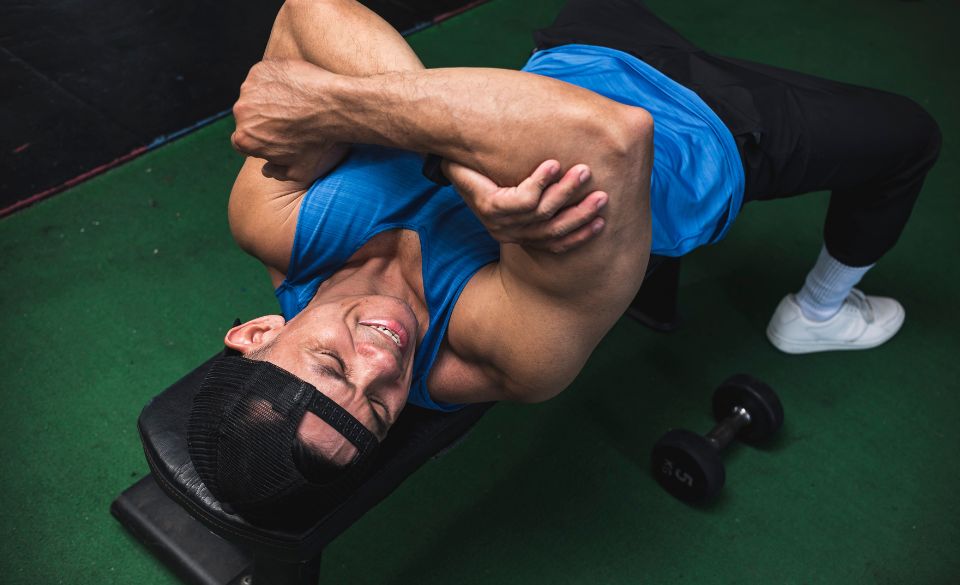
Boosting Strength and Calming Pain with Bicep Tendonitis Exercises
Bicep tendonitis is a condition that causes pain and discomfort on the inside of the upper arm and down to the elbow. It is common amongst athletes, weightlifters and bodybuilders in particular. If left untreated, the pain can worsen and become chronic. Fortunately, there are certain exercises that can help strengthen the muscles around the bicep and reduce the pain.
The first step in treating bicep tendonitis is to properly rest and restrengthen the muscles around the area. This can include stretching, gel-based compression, and gentle exercises such as using low-impact resistance bands to strengthen the weak muscle groups around the bicep. It’s important to start with the most basic exercises, such as elbow flexion and elbow extension, and gradually ramp up intensity and difficulty.
Once the basic exercises have been completed, it is important to focus on range of motion exercises. These can help loosen the area around the bicep and reduce tension. These exercises should be done gently as pushing the band too far can cause further harm and damage. Additionally, it may be helpful to consult a physical therapist to get more tailored advice and guidance on which exercises are right for the individual.
Gradually progressing to heavier resistance exercises can help build the muscle back up and reduce pain. Again, this should always be done gradually so as not to cause additional harm to the area. Examples of resistance-based exercises include bicep curls, tricep dips, and reverse wrist curls. It is essential to ensure the correct form is maintained at all times in order to prevent further injury from occurring.
For those looking to boost strength and increase overall muscle size, compound exercises may be the way to go. Compound exercises involve multiple muscle groups working together to complete a movement. This type of exercise will help to build muscle around the bicep, which can alleviate some of the pain associated with bicep tendonitis. Examples of compound exercises include pull-ups, push-ups, burpees, and squats.
Building strength and aiding recovery through targeted exercises can be an incredibly effective way of reducing the pain and discomfort associated with bicep tendonitis. However, when starting any exercise regimen it is important to listen to your body and start off with light exercises before gradually progressing to heavier exercises. Exercise can be a great way to help manage the pain, but if the pain persists or worsens then it is essential to seek medical advice to ensure proper treatment and management.
Key Stretches
Stretching is a crucial component in helping to treat bicep tendonitis. It can help reduce the tension in the area and provide relief from the associated pain. Stretching should be done both before and after any form of exercise. Some key stretches to help manage bicep tendonitis are the Seated Bent Over External Rotator Stretch, the Bicep Stretch with a Chair, and the Standing External Rotator Cuff Stretch.
The Seated Bent Over External Rotator Stretch is an effective stretch for those suffering from bicep tendonitis. To complete the stretch, start by sitting on the floor with one leg extended on the floor in front of you and one leg folded underneath. Carefully lean forward until your chest is close to your knee, and then keep your chest close to your knee, and rotate your arm away from your body. Maintain this position for ten to fifteen seconds before slowly releasing and repeating the stretch on the other arm.
The Bicep Stretch with a Chair is a great way to target the area. To complete the stretch, start by sitting on the edge of a chair with your back straight and your arm suspended off to the side. Place the other hand on your elbow and carefully pull it forwards to activate the bicep. Hold for ten to fifteen seconds before releasing and repeating on the other arm.
The Standing External Rotator Cuff Stretch is a terrific stretch that can help reduce tension in the bicep tendon. To perform the stretch, stand next to a wall with your arm extended and your elbow between shoulder and waist level. Place your palm on the wall and keep your feet aligned with your arm. Gently rotate your body away from the wall until you feel a stretch in your shoulder and bicep. Maintain this stretch for ten to fifteen seconds before releasing and repeating on the other arm.
Isotonic Exercises
Isotonic exercises are a type of exercise that help strengthen weakened muscles, and are perfect for people suffering from bicep tendonitis. Isotonic exercises involve the muscles going through a range of motion while stabilizing a weight. Popular isotonic exercises include bicep hammer curls, tricep kickbacks, close grip presses, and standing lateral raises.
Bicep hammer curls are a great way to target the bicep muscles. To complete the exercise, hold two dumbbells by your side with your palms facing and your arms extended. Curl your hands up towards your chest and maintain the position for two to three seconds. Gently lower your arms before repeating the exercise.
Tricep kickbacks are great for targeting the triceps and they don’t require much equipment. To complete the exercise, start by placing your right palm on a surface and gripping a dumbbell with your left hand. Lift your left arm up to roughly ninety degrees and kick it straight back until your arm is aligned with your body. Hold for two to three seconds before releasing and repeating on the other arm.
Close grip presses are another effective exercise for strengthening the muscles in the shoulder and arms. To perform the exercise, sit upright on a bench, resting your arms on your lap and gripping a barbell. Slowly press the barbell up until your arms are fully extended and maintain the position for two to three seconds before returning to your lap.
Standing lateral raises are great for targeting the deltoids, and they require no equipment. To complete the exercise, stand up straight with your arms by your sides. Keeping your elbows slightly bent, lift your arms away from your body until they are parallel with the floor. Hold the position for two to three seconds before releasing and repeating the exercise.
Summary – Bicep Tendonitis Exercises
Whilst exercises and stretching are highly effective at helping manage the pain and discomfort of bicep tendonitis, they are not the only aspect of treatment. It is essential to focus on rest and recovery, as without an adequate amount of rest the condition can worsen and become chronic. Additionally, looking after the entire body is important, as physical activity in other areas can actually exacerbate the injury.
When starting any form of exercise or stretching, it is important to go slow and consistent. It can be tempting to try and rush through the process in order to speed up recovery, but this can be detrimental to the healing process. Ensuring that the area is properly rested and restedrengthened is essential to helping get it back to full health. Additionally, it is important to listen to the body and stop if any exercise is causing pain or discomfort.
In conclusion, bicep tendonitis can be incredibly painful and uncomfortable, but there are certain exercises and stretches that can help to alleviate the pain and get the injured area on the road to recovery. Through a combination of rest, targeted strengthening, stretching, and isotonic exercises it is possible to help get the bicep back to full strength. Focus on form and listen to the body for the best results.




